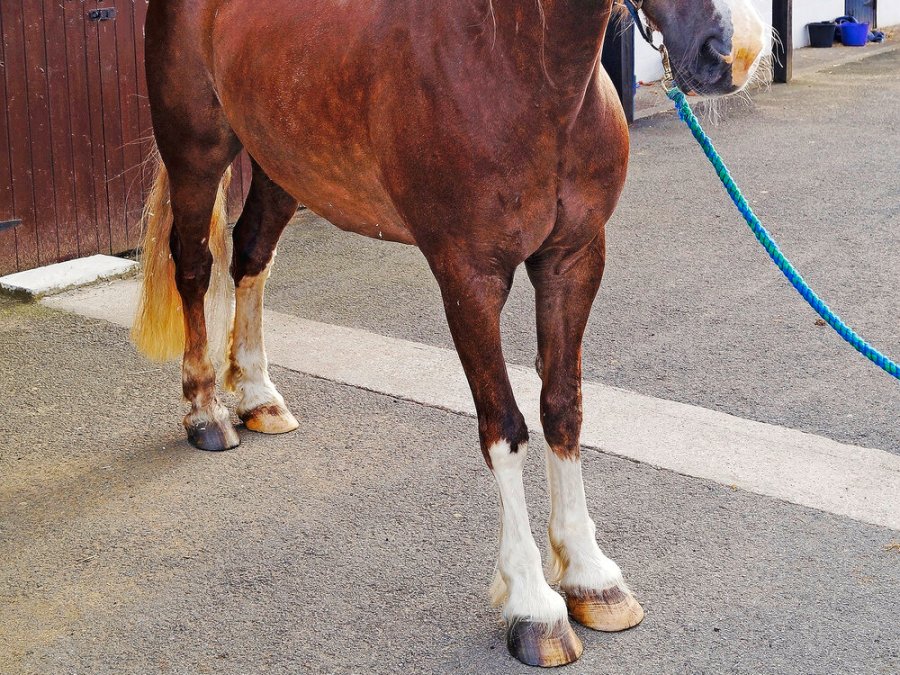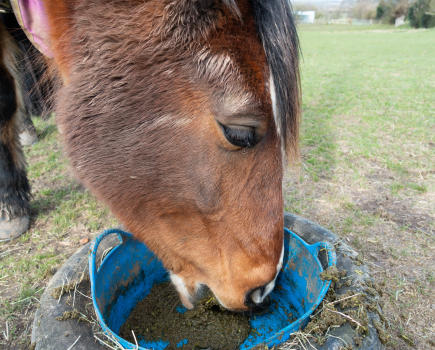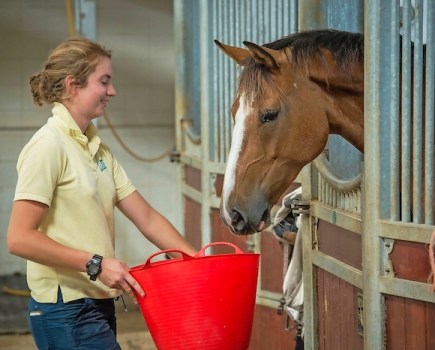In partnership with Allen & Page
There are ways to ensure that your horse or pony receives a healthy balanced diet while minimising the risk of laminitis, but swift measures taken at this time of year are key when taking care of a horse in spring, says Jo Palmer, a nutritionist for Allen & Page. Thanks to the longer days and better weather lots of horses and ponies will be spending more time out in their paddocks. This is a welcome relief for many owners after the demands of winter. Nevertheless, the risk of spring laminitis increases sharply at this time of year, and careful management is needed to balance a horse’s health and nutritional needs.
Check your horse’s bodyweight
When feeding any horse or pony with a history of laminitis, it is essential to ensure that their diet reflects their nutritional needs, most notably in maintaining a healthy weight. Spring grazing is likely to lead to significant weight gain, particularly in good doers, and it is well recognised that overweight and obese horses and ponies are more at risk of developing laminitis.
Therefore, it is important to implement weight loss/control measures to prevent potentially problematic weight gain as early as possible. By maintaining your horse at a healthy weight and body condition score, the risk of laminitis developing or recurring in the future can be lessened.
- Regular use of a weigh tape and undertaking hands-on body condition scoring will help you to notice changes in your horse’s weight and condition at the earliest opportunity. You should be able to feel your horse’s ribs easily when you run your hand lightly across their ribcage, and there should be no fat deposits or signs of a crest developing on their neck.
- Don’t over rug but allow colder night-time temperatures of spring to aid weight loss as your horse uses fat reserves to keep warm.
- Did you know that feeding straw is a simple way to help a horse or pony lose weight too? When done correctly, feeding straw is safe to do for certain equines.
How to reduce energy and sugar intake
During the spring and summer months, grass will be the largest part of most horses’ diets and the biggest contributor to their energy (calorie) and sugar intakes. Alongside obesity, consuming a high sugar diet is a major risk factor for developing laminitis and for this reason lush, fertilised grazing should be avoided.
Other actions to take to reduce grass intake while still allowing your horse to maintain their natural behaviours include:
- Offering unproductive, poor quality grazing.
- Restricting grass intake via strip grazing or implementing a track grazing system.
- Using a grazing muzzle.
- Turning out at night when sugar levels are at their lowest.
- Bringing in by mid-morning when the sugar levels rise again.
- Using a dry paddock (e.g. a bark chip pen) as a turnout area is a useful alternative to stabling that allows the horse to exercise freely.
- Frosty grass is particularly high in sugar. As some parts of the UK can experience overnight frosts into May, keep a close eye on the local weather forecast and avoid turning out horses at risk of laminitis until the frost has melted.
Feed a low-energy forage
To maintain essential fibre intake, supplementary forage should be provided to horses and ponies when stabled or on very restricted grazing. For those prone to the disease and/ or overweight, feed hay that has been soaked for 12-16 hours. Soaking hay leaches out the water soluble carbohydrates, making it much lower in sugar and calories than unsoaked hay.
Laminitis is common in horses and ponies with equine metabolic syndrome (EMS) or insulin resistance (IR), but regular exercise helps to stabilise blood insulin levels which in turn can reduce the risk of laminitis.
While regular exercise is important for all round health, it is vital that your horse is fit enough for the work you are asking them to do. Avoid fast work on hard or stony ground to help prevent concussion to the hooves, as this can also lead to laminitis.
Meet the expert: Jo Palmer has a BSc (Hors) in agriculture with animal science and is a member of the Allen & Page nutrition team, helping to guide owners on feeds and feeding.
Check out our subscription offer








